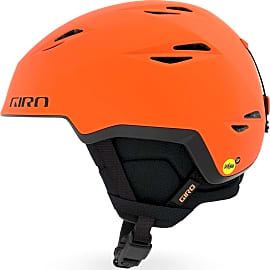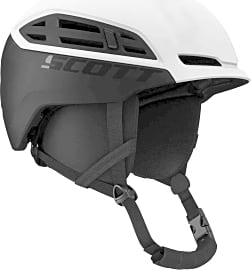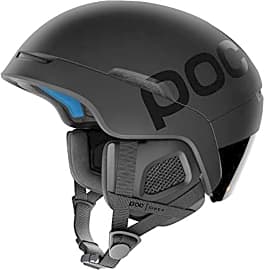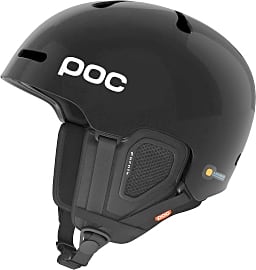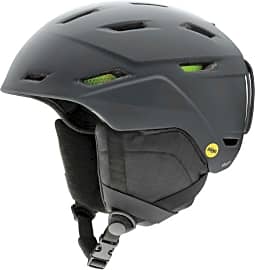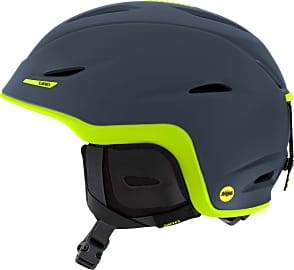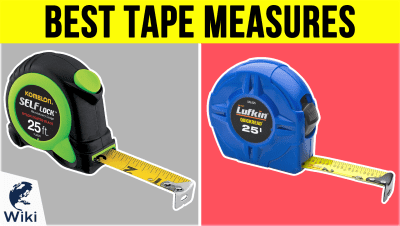The 10 Best Ski Helmets

This wiki has been updated 35 times since it was first published in January of 2017. Style and safety -- in the world of snow sports, these don't have to be mutually exclusive; in fact, protective headgear can also help you stay warm and improve your aerodynamics. Keeping in mind appearance, features, and affordability, we've put together a list of ten ski and snowboard helmets that should keep you well protected if the unexpected happens -- and looking good when it doesn't. When users buy our independently chosen editorial choices, we may earn commissions to help fund the Wiki.
Editor's Notes
February 24, 2021:
While safety is the most important factor that determines a good ski helmet, it is just one of the considerations that come into play when deciding upon our choices for the best available models. This latest update includes three recently-released items, all of which are exceptionally well built, such as the Giro Grid, with its MIPS system that uses an interlocking foam construction to effectively absorb shock, and the Scott Couloir Mountain that has a Casidion foam top that is extremely light in weight but also has very good impact protection properties.
Comfort is another important factor when choosing a helmet, and all three of our new choices utilize a tensioner that fits the helmet snugly to the head, such as the rotary dial adjusters on the two aforementioned models, and the Halo system on the Scott Couloir Mountain, which also has an ultra-lightweight construction and sleek, aerodynamic lines.
Finally, ventilation is something that can make or break a helmet's efficacy, and All our new additions feature adjustable venting that channels airflow to cool the head and disperse excess moisture. Most include a moisture-wicking liner, such as can be found in many neck gaiters, that also helps prevent sweat buildup and the resulting wind chill. The Bollé RYFT has particularly efficient ventilation channels that rapidly disperse airflow around the cranium when the vents are opened and lock in warmth when shut.
November 03, 2019:
Wearing a helmet has always been better than nothing at all, but with the advent of MIPS, a Multi-directional Impact Protection System, their ability to minimize injury has taken a great leap forward. Without getting too technical, MIPS-equipped helmets feature a plastic slip plane between the padding and the shell that can help to reduce rotational forces in certain kinds of impacts. While MIPS helmets do cost slightly more than their non-MIPS-equipped counterparts, we feel the additional expense is worth it to keep your brain safe, which is why we only included helmets with this feature on our list.
The only exception to this is the POC Obex BC Spin, which features the company's own proprietary method of reducing rotational forces that utilizes medical-grade silicone gel shear pads rather than a plastic slip plane. According to research, it is equally as effective as MIPS, and as such, was able to earn its spot on our list. It is the ideal choice for backcountry skiers too, as it features an NFC medical ID chip and a Recoor reflector passive transponder that helps search and rescue teams find you easier.
If you tend to run hot on the slopes, you'll want to consider the Smith Optics 2019 Vantage, which has 21 strategically-placed vents to provide a high level of airflow. For those who run cooler and want something that can help keep them a bit warmer, we recommend the Smith Optics 2019 Code, which has a plush, beanie-like liner, along with a great pair of gloves.
When it comes to adjustability, few can match the Giro Range, which has a multi-piece shell that can expand and contract up to six centimeters, allowing for a custom fit. However, if you are tight budget constraints, you may have to look at the affordably-priced Giro Ledge instead.
Special Honors
Inkwell Hand-Painted Helmets Add a touch of personality to your ski-wear with one of these hand-painted helmets that come in a number of striking designs. Alternatively, you can create your own image and have it applied to your headgear, or opt for custom branding to display your business or monogram. inkwellhelmets.com
Do I Really Need To Wear A Ski Helmet?
What most researchers do agree on though, is that wearing a helmet won't increase your chances of head trauma while participating in winter sports.
Despite being fun, recreational activities that people of all ages enjoy, skiing and snowboarding are not without risk. According to the National Ski Areas Association, an average of 40 people die each year due to ski- or snowboard-related accidents. Of course, not all winter sports accidents result in death. Roughly 600,000 people are injured each year in North America alone while snowboarding or skiing, and 20 percent of those are head injuries.
Public awareness regarding the use of ski helmets started to rise in 2008, when two celebrities were involved in fatal skiing accidents. The following year, a mother of four collided with a German politician while skiing in Austria. The politician, who was wearing a helmet survived, but the woman, who was not wearing a helmet, died. Also in 2009, Natasha Richardson, a famous Canadian actress, died after sustaining a traumatic head injury while skiing.
After compiling all of the available data, one Canadian meta-analysis found that helmet use reduced the instances of head injury somewhere between 21 and 45 percent. The wide percentage range is the result of differences in how the studies were performed. Some only looked at serious head trauma, while others focused on specific age groups.
As of yet though, it is still hard to factually prove that the use of ski helmets significantly reduces the chance of death or serious head injury when skiing or snowboarding for a number of reasons. Just like with any type of safety helmet, it is unethical to perform a controlled experiment in which one test group wears a helmet and another does not while being subjected to head trauma. There is also some debate as to whether the use of a ski helmet leads to increased risk taking. Despite the lack of sufficient hard evidence, it is hard to imagine how wearing a well-constructed and padded helmet cannot help but to lessen the chances of experiencing serious head trauma from a hard impact. What most researchers do agree on though, is that wearing a helmet won't increase your chances of head trauma while participating in winter sports. This is likely why the Agency for Healthcare Research and Quality in America recommends all recreational skiers and snowboarders wear a helmet.
Sizing Your Ski Helmet
No matter how well-constructed a helmet is, it won't protect you if it doesn't fit correctly. If you are unsure what size you wear, don't just buy one that correlates to your hat size. Instead, pull out a tape measure and get the true circumference of your head. When measuring your head, position the tape measure so that it sits about one inch above your eyebrows and always do your best to keep the tape level as you wrap it around your head. Perform a few measurements to ensure that you have found your head's circumference at its widest point. Once you have the measurements, you can check the size chart that most helmet manufacturers provide to find the closest match. If you are between sizes, it is usually better to choose one size larger rather than one size smaller, as wearing a helmet that is too tight can cause a compression headache.
After your helmet arrives in the mail, you should check the fit before taking it out on the slopes.
After your helmet arrives in the mail, you should check the fit before taking it out on the slopes. Put it on your head and shake your head from side to side. Does it slid around easily? If so, it is too big. When your helmet moves from side to side, it should move your skin a bit too. Does it feel like it is squeezing your head? If so, it is probably too tight. A well-fitting helmet should feel snug, but not tight. Many ski helmets have a size adjustment mechanism or removable pads to allow you to make slight adjustments if needed.
Once you have determined the circumference is right, check the fit of the chin strap. Try pushing your helmet up a little bit at the front edge, and then the back edge. Did it move? If so, you need to tighten the chin strap. It should sit firmly against the bottom of your throat, but shouldn't feel constrictive.
If you wear ski goggles, now is the time to check how well they work with your new helmet. Put your ski googles on to ensure the helmet sits snugly on top of them, without pushing them down on your face or hindering your vision.
Other Things To Consider When Choosing A Ski Helmet
In addition to fit, there are a few other factors your may want to consider when choosing your ski helmet. Almost all ski helmets are constructed in one of two ways: injection molding or in-molding. Injection-molded helmets tend to be more durable and offer a little more protection, but are slightly bulkier. In-molded helmets are sleeker and lighter in weight. Each skier or snowboarder will have a different preference on which they find more comfortable and feel more secure wearing.
Venting method is another thing to look at. Most ski helmets will have some form of venting, but the type your helmet has can play a big role in how convenient it is. Some helmets have open vents that cannot be closed or adjusted. While this type will certainly help to keep you cool, you may find that it makes your helmet too cold at times, requiring you to wear a thin beanie underneath. Helmets with removable plugs allow you to keep the vents completely sealed when you are cold, and unplug them when you are hot. Some wearers find this inconvenient though, as you generally have to take the helmet off to adjust the air flow. The most convenient helmets are those with adjustable vents. These have a lever that you can push to easily fine tune the amount of air flowing through.
Detachable liners are a nice feature to have in a ski helmet. Not only will this offer you one more way to adjust the warmth a helmet provides, but you can also toss them into the wash if your helmet begins to build up an odor.


